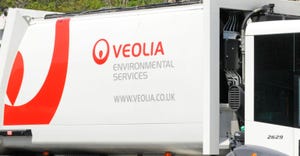Violators of King County, Wash., C&D Law Can Now Face Fines
The new regulation, the nation’s first such ban on a countywide scale, requires C&D materials of value from projects in King County be sent to facilities that sort out readily recyclable materials and properly dispose of the pieces too small or contaminated to have value.
In an effort to reduce waste and increase recycling, King County, Wash., this month has begun enforcing a first-of-its-kind law banning large quantities of construction and demolition (C&D) materials as garbage at its solid waste facilities and mandating that the materials be recycled.
Although small pickup trucks of C&D materials will be accepted, the county-wide ordinance, passed in January of this year, bans those driving dump trucks and other mechanized dump vehicles, from dropping large loads at the county’s solid waste facilities.
Instead, it is directing larger loads to the 12 county approved and licensed facilities equipped to receive and properly recycle or dispose of C&D waste. The county is approving facilities in support of the new regulation, which establishes a facility designation system covering both C&D processing facilities and C&D waste transfer facilities. The system also allows for new C&D processing facilities to be designated in the future.
The new regulation, the nation’s first such ban on a countywide scale, requires C&D materials of value from projects in King County be sent to facilities that sort out readily recyclable materials and properly dispose of the pieces too small or contaminated to have value. Materials of value include metal, cardboard, new gypsum scrap, clean wood, asphalt brick and concrete.
“More than 250,000 tons of construction and demolition debris generated in King County go to landfills as waste every year—and a significant portion of that can be recycled or reused,” said Christie True, director of the King County Department of Natural Resources and Parks in a press release. “Diverting recyclable and reusable materials from landfills is in line with our region’s strong stewardship ethic.”
The ordinance is in line with the goals of King County’s 2015 Updated Strategic Climate Action Plan (SCAP) by reducing greenhouse gas emissions through recycling and reusing construction materials, rather than manufacturing new materials. The SCAP, a five-year blueprint for county action to confront climate change, integrates climate change into all county operations and its work in the community. It also outlines King County’s goal to recover and recycle 70 percent of waste materials by 2020.
The private facilities handling C&D waste are routinely monitored to ensure compliance with environmental standards. In fact, the ordinance allows for the county to contract with the King County Sheriff’s office to provide a full-time detective whose job is to enforce the regulation, says James Neely, environmental program managing supervisor for the county.
“Our approach is walk softly and carry a big stick, I guess you could say. Our approach initially is education and outreach,” he says.
The detective has been active in the field since the first of the year, Neely says. He’s been visiting job sites, contractors and processors to educate them on the new requirements. The county issued warning letters stating violators will be sited for noncompliance.
The ordinance calls for a $100 fine for first violation and $500 for a second. After that, the fine will double with each infringement.
As of yet, no fines or regulatory actions have been assessed, he says, but will be if warnings don’t bring about compliance.
“We will, however, do that in the future to make sure there is a level playing field and that the people who are paying into our system, are getting the services that they deserve and that materials are recycled. And also that the residuals are taken to a permitted landfill,” Neely says.
The county mailed out 5,000 flyers, had a series of public meetings and stakeholder meetings with the C&D facilities and contractors to divert the waste from its solid waste facilities. They’ve also included the 37 building permit agencies in King County to help remind those pulling permits about the new requirements.
“Before the ordinance we still directed material to private companies, but it was more for disposal than recycling. We didn’t have the requirement for recycling. We’ve also tightened down on what we’ll accept at our transfer station. And we didn’t do as much enforcement under the old system for a level playing field,” Neely says.
It’s a strict enforcement approach, he says. There had been concerns in the past that companies were shirking regulations and charging a lower price.
The ones who were doing the right thing were suffering from that,” Neely says.
In addition to fines, the county can levy misdemeanor charges for violations such as illegal dumping in unpermitted pits, for example. Those charges may result in more fines and possible jail time.
So far, the ordinance and the regulations it has provided is off to a successful start, Neely says.
“We’ve signed up 12 facilities, where initially we had five, so we’ve increased the opportunity for recycling as well as mandating that they recycle. We’ve created a viable system for the county to increase its recycling and also dispose of the residuals in an environmentally sound method.”
About the Author(s)
You May Also Like


